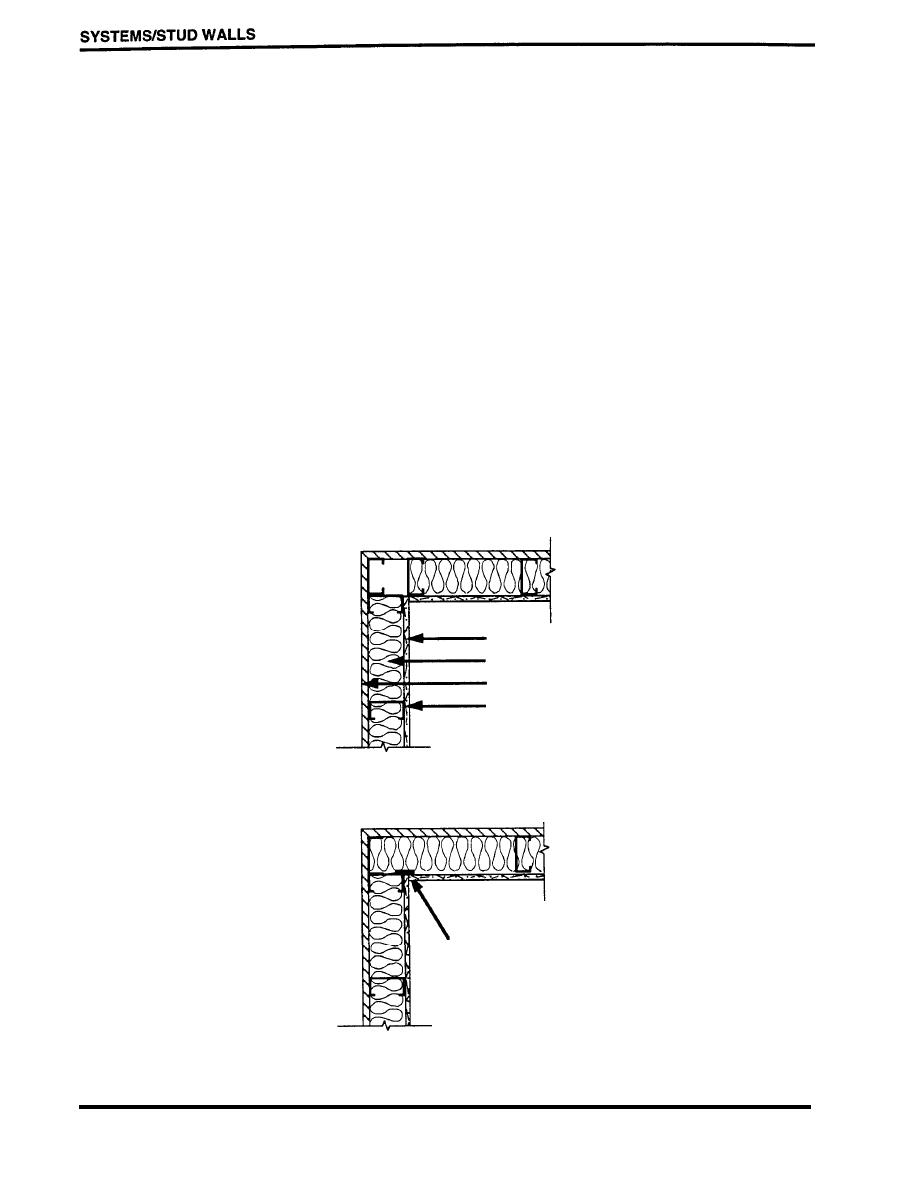
Thermal Insulation
While metal stud infill walls are relatively straightforward to insulate, the relatively high conductivity
of the studs and the horizontal supporting channel results in severe thermal bridging. This thermal
bridging at the studs degrades the overall thermal performance of the wall by about one-third and
can lead to condensation on the interior surface of the wall during the heating season. Such
thermal bridging also occurs at corners. In order to obtain good thermal insulation system
performance in these systems, the thermal bridging of the design needs to be reduced. This can be
done through the use of a layer of rigid insulation outside of the stud wall and the rearrangement of
the metal studs themselves. Also, when the stud spaces are insulated with friction-fit batts of
fibrous insulation, the entire space must be filled with insulation to prevent convection within the
space. Special attention must be given during installation to fill all spaces with insulation, including
corners.
Figure 4.3.2 shows a thermal bridge at a metal stud corner and an alternate nonbridging design
(Steven Winter Associates). In this detail, the two studs in the corner constitute a significant
thermal bridge, made worse by the fact the the corner space is uninsulated. The alternative design
eliminates one of the studs and fills the comer with insulation. A steel clip is attached to one of the
corner studs for the attachment of the interior finish.
UNACCEPTABLE
Interior finish
Glass fiber insulation
Exterior finish
Metal stud
ACCEPTABLE
I
Steel clip for
attaching
interior finish
SECTIONS
Figure 4.3.2 Metal Stud Corners (Steven Winter Associates)
PAGE 4.3-2


 Previous Page
Previous Page
